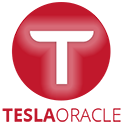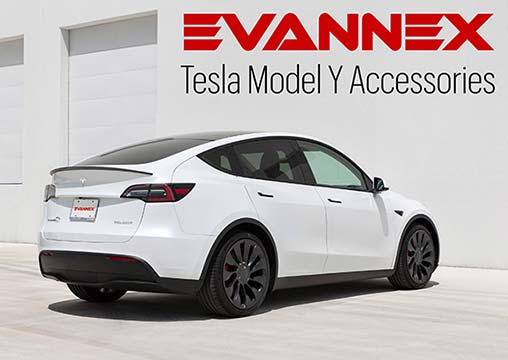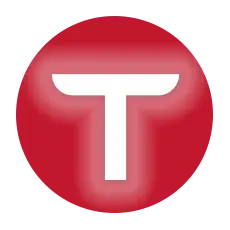Technoking and CEO of Tesla, Elon Musk announced last month that Full Self-Driving (FSD) V12 will not be a ‘Beta’ version. He live-streamed 45 minutes of driving his personal Tesla Model S car on Tesla FSD V12 on the streets of California yesterday.
At the time of this writing, around 10 million viewers watched the Tesla FSD V12 live-stream video on Elon Musk’s social media platform X (formerly Twitter). This demo drive by Elon Musk also beta-tested X’s live-stream feature with a huge traffic volume as well.
Tesla’s FSD version 12 is not yet released even for the early beta testers. Elon Musk and probably a few employees have it installed on their cars for first-hand experience and testing. Tesla rolled out FSD Beta v11.4.7 earlier this week for beta testers.
Elon Musk has been facing a flood of criticism for not being able to demonstrate Tesla Autpilot’s Full Self-Driving feature for several years now. Especially since he made a variety of claims during his Autopilot 2.0 Conference Call in 2016. Therefore, he needed to give an answer to the critics which he decided to do with a live-stream demonstration of Tesla Autopilot FSD V12.
Musk started his FSD V12 journey from Tesla Engineering HQ in Palo Alto, CA. He put his Tesla Model S in Autopilot FSD mode and let the car drive itself to a random destination he chose from the on-screen navigation map.
In the early minutes of this test, Musk’s car encountered a construction area with dozens of cones. According to him, FSD V12 has not previously experienced this construction area. The vehicle sailed in this area quite smoothly without any human intervention.
His car made a perfect stop at a red light just around 2 minutes into the video followed by a good unprotected left onto Page Mill Road, Palo Alto. “It’s kinda hard to tell [looking] at the live stream, but the car is driving smoothly”.
Unprotected left turns (UPLs) have been a difficult challenge for FSD Beta builds. Looking at Elon Musk’s video, Tesla (improved audio version at the end of the article).
Elon Musk said that the Autopilot is designed on the same mechanism as the human vision works — eyes and our brain. Tesla Autopilot uses cameras and neural net AI to make driving decisions (collectively called the Tesla Vision).
Around 5 minutes into the video when the vehicle slowed down for multiple speed bumps automatically, Musk explained “There’s no line of code that says slowdown for speed bumps. So, it’s doing this based entirely on video training”. He said the same thing when a bicyclist crossed his vehicle. Talking about road signs, he said “It can read signs without ever being told to read”.
Tesla FSD 12 also completed a roundabout correctly in this test. It first stopped for the traffic coming from the left and took a good trajectory around the roundabout.
There’s over 300,000 lines of C++ [code] in the exclusive control stack of version 11, and there’s basically none of that in version 12.
Elon Musk / FSD 12 live stream video (below)
According to Elon Musk, if FSD 12 does not make a good decision in a specific scenario, Tesla supplies the neural net with more driving data (basically videos). And just any data is not enough, quality data from good drivers is the key to training Tesla Autopilot for Full Self-Driving (FSD).
While FSD 12 has no lines of code in it to run, the selection of data that’s supplied to the neural nets needs curation, according to Musk. This curation software however is run on lines of code and AI combined. The basic source of this video data is Tesla’s entire global fleet of millions of cars.
Tesla started shifting Autopilot decision-making from programming logic to neural nets in 2020. After three years of development, we can see the results in Elon Musk’s FSD V12 video, the entire decision-making and scenario handling has been shifted to Tesla neural nets and AI.
The important thing to note here is that Elon Musk’s Tesla Model S which he is using to test FSD V12 has the Hardware 3 (HW3) computer installed. The latest is Hardware 4 (HW4) which has a faster computer and more cameras in the suite.
Musk also revealed an important piece of information during this test about the existence of FSD V12 testers around the globe. “We’ve got FSD 12 test drivers around the world. We got people I think like in New Zealand, like Thailand, in Norway, Japan,” he revealed. This is of course in addition to the test drivers (Tesla employees) present in North America.
In the entire 45 minutes of driving, Elon Musk had to intervene only once at around 19 minutes and 54 seconds into the FSD V12 video demonstration. This happened at a busy intersection where Tesla Autopilot tried to run the red light, Musk immediately took control of the vehicle.
Watch the entire test below and let us know your thoughts in the comments section beneath the content.
Stay tuned for constant Tesla updates, follow us on:
Google News | Flipboard | X (Twitter) | WhatsApp Channel | RSS (Feedly).
Related:
- Watch how Cybertruck FSD v13.2.2 behaves around vulnerable road users (VRUs)
- HW4 Teslas and Cybertruck get Holiday Update 2024.45.25.5 and FSD v13.2.2 (Release Notes)
- Tesla HW4 cameras can melt snow to clear the Autopilot FSD Vision
- Tesla FSD v13 handles its first accident safely where human drivers failed (video)
- Tesla (TSLA) begins wide release of FSD v13 to HW4 vehicles, Holiday Update to follow in a few days
- Tesla rolls out FSD v13.2.1 to early access Cybertruck owners and HW4 cars









I’ll wait for a few more years until the full picture is seen. I figure it will be ready in another 15 to 25 years.
Really impressive.
We’re almost there.
I wonder how the car would have reacted, after running the red light, when it would have become obvious that its trajectory meant crossing the trajectory of the vehicles in front of it